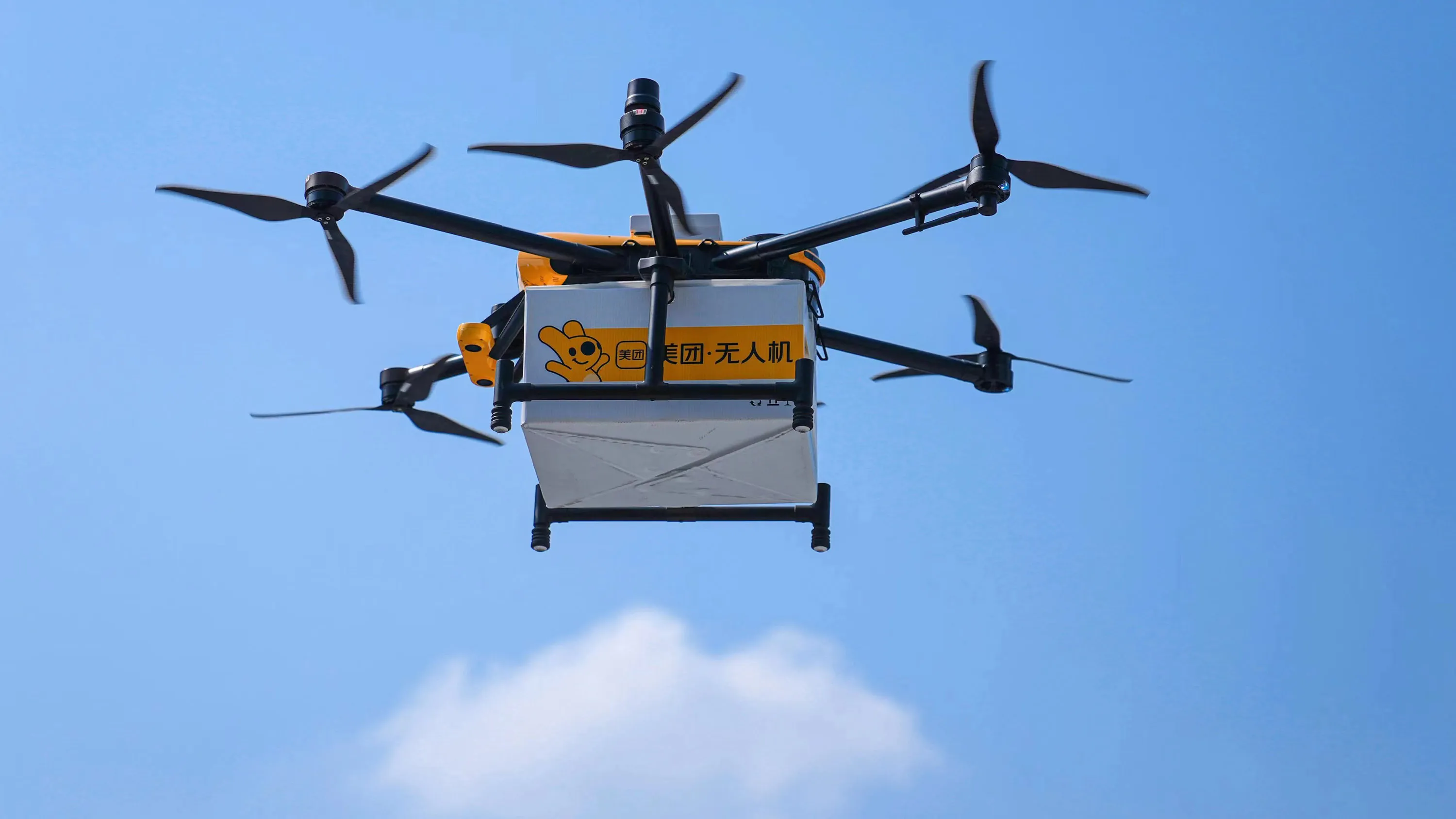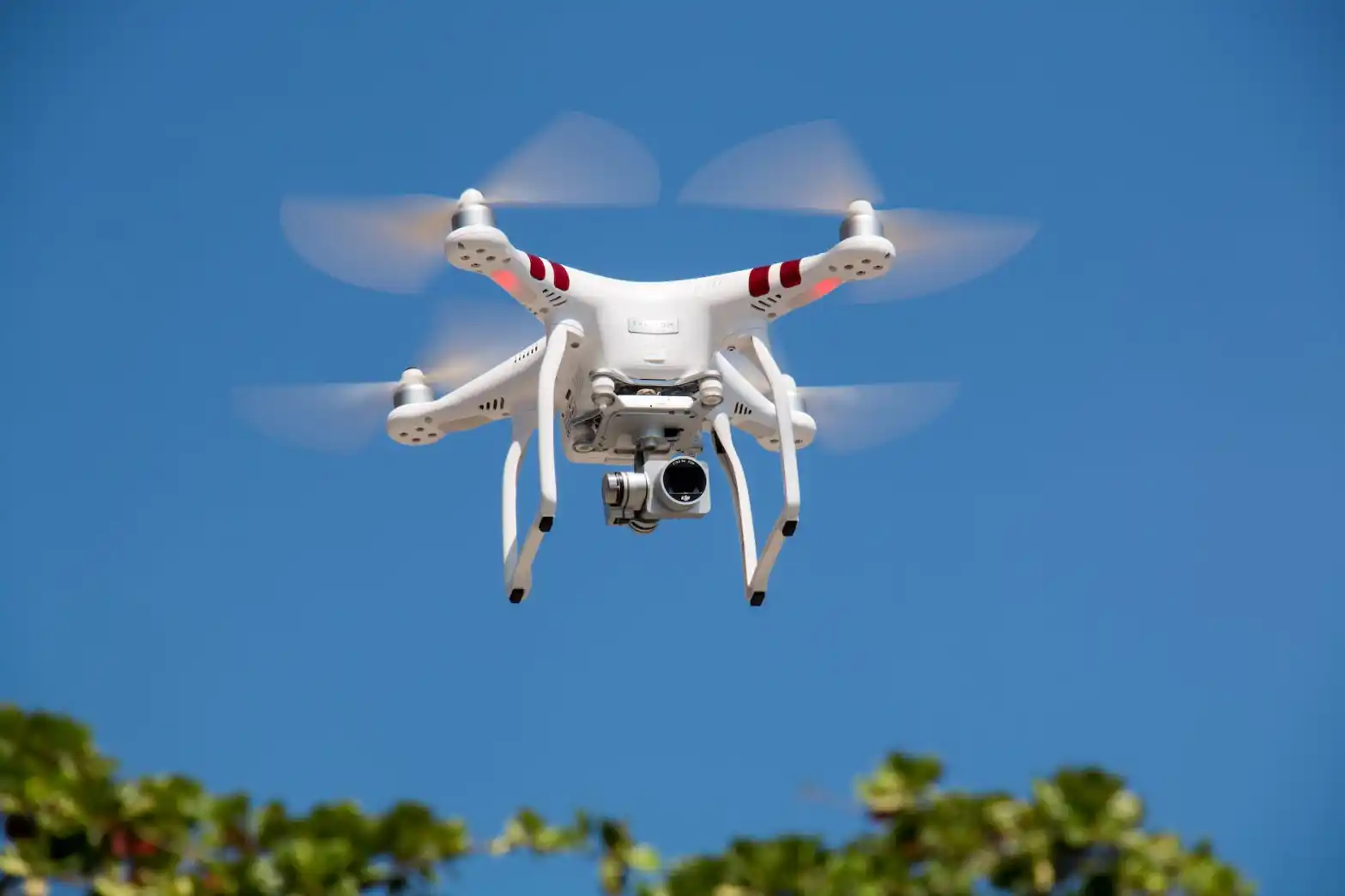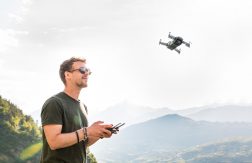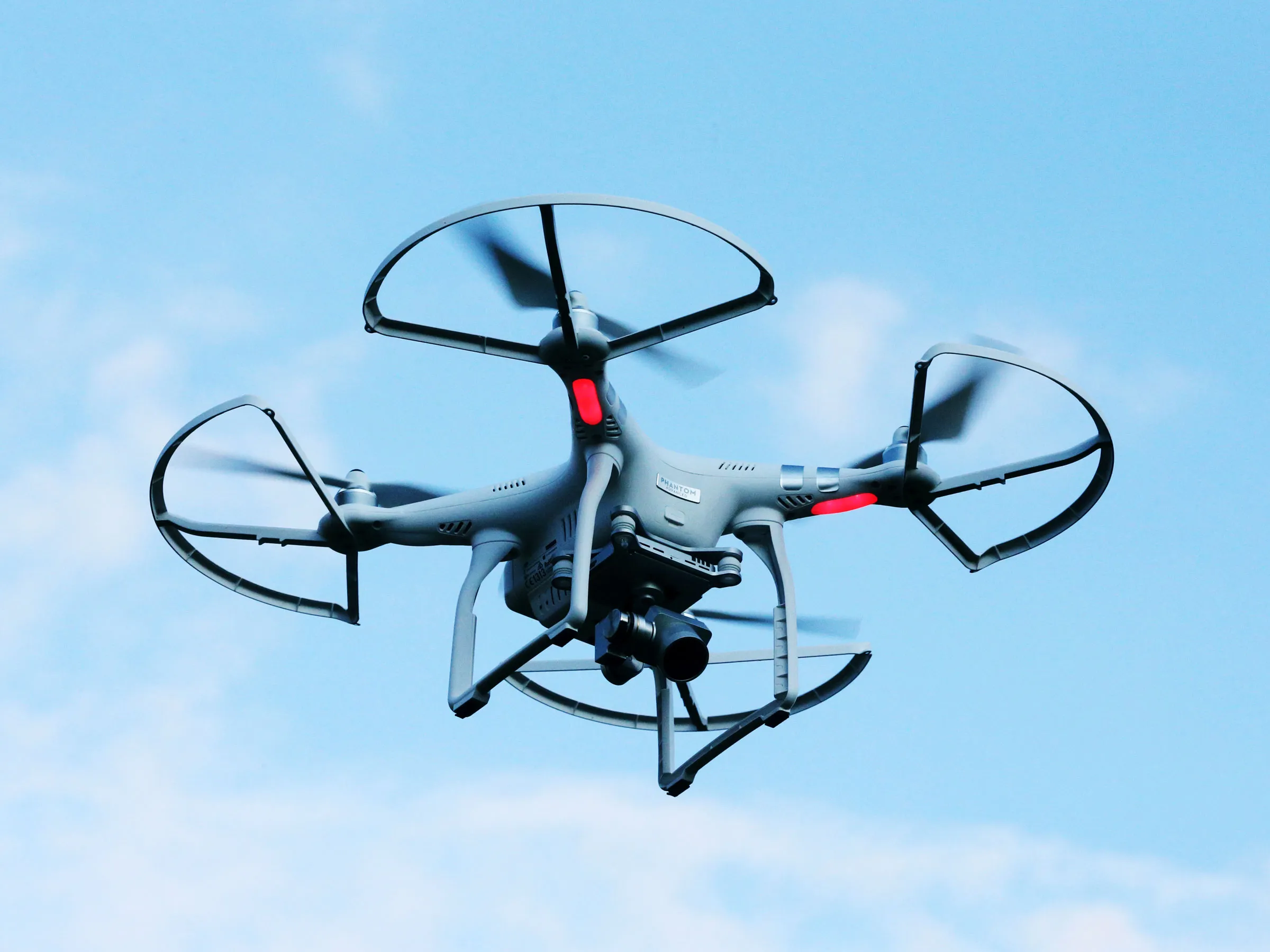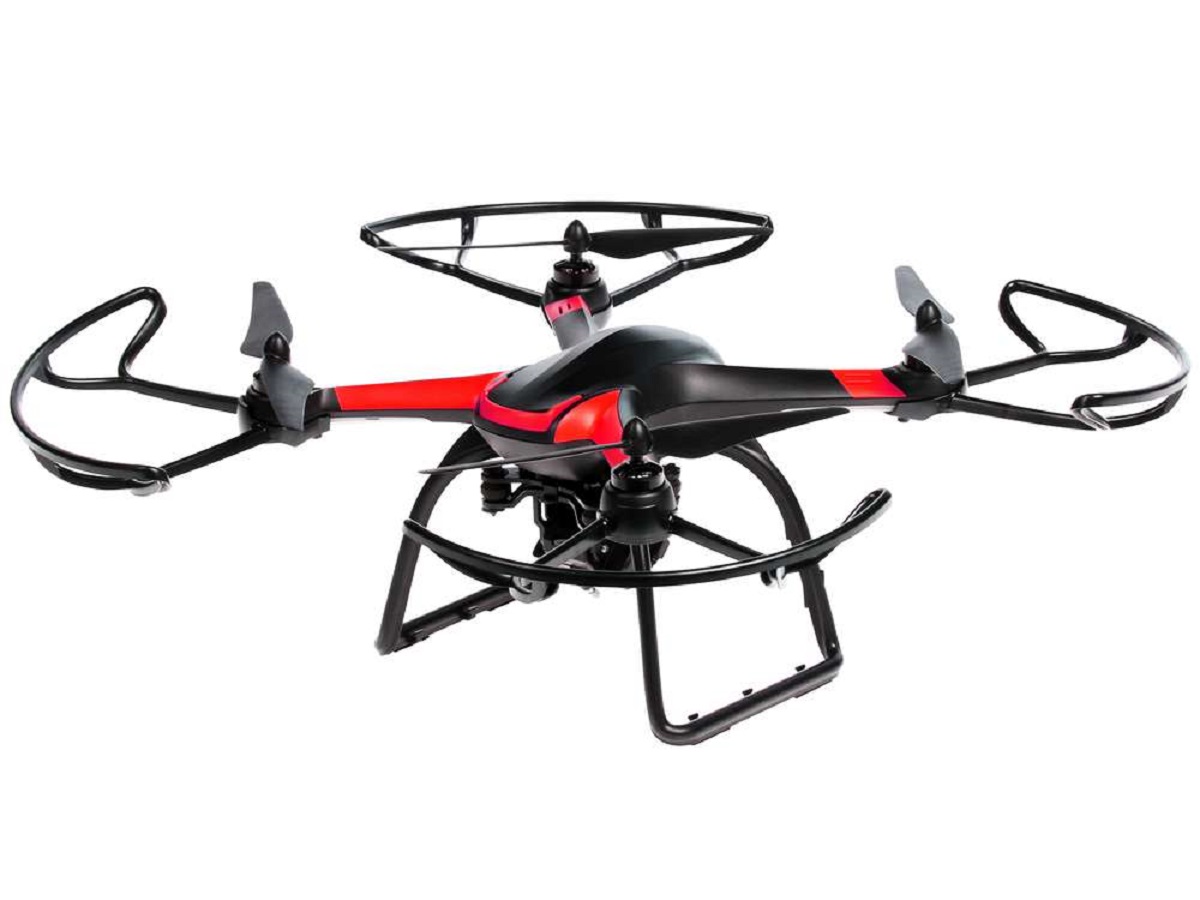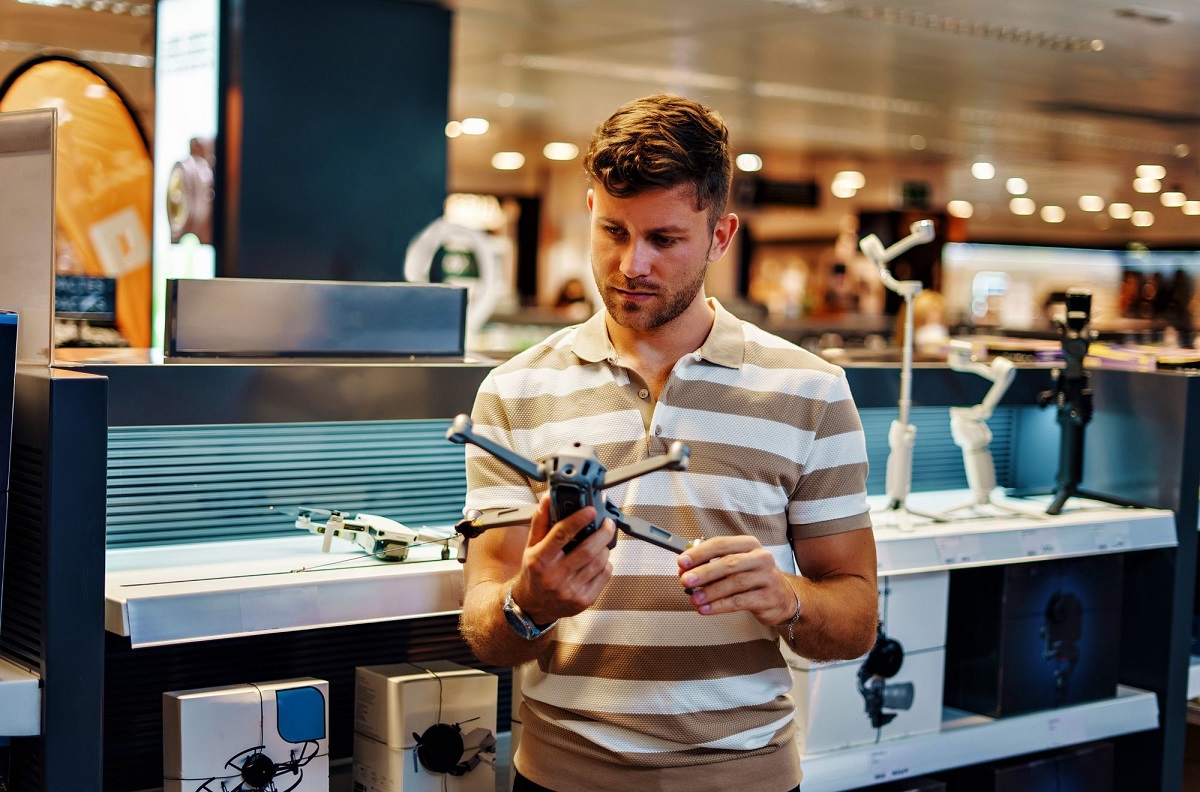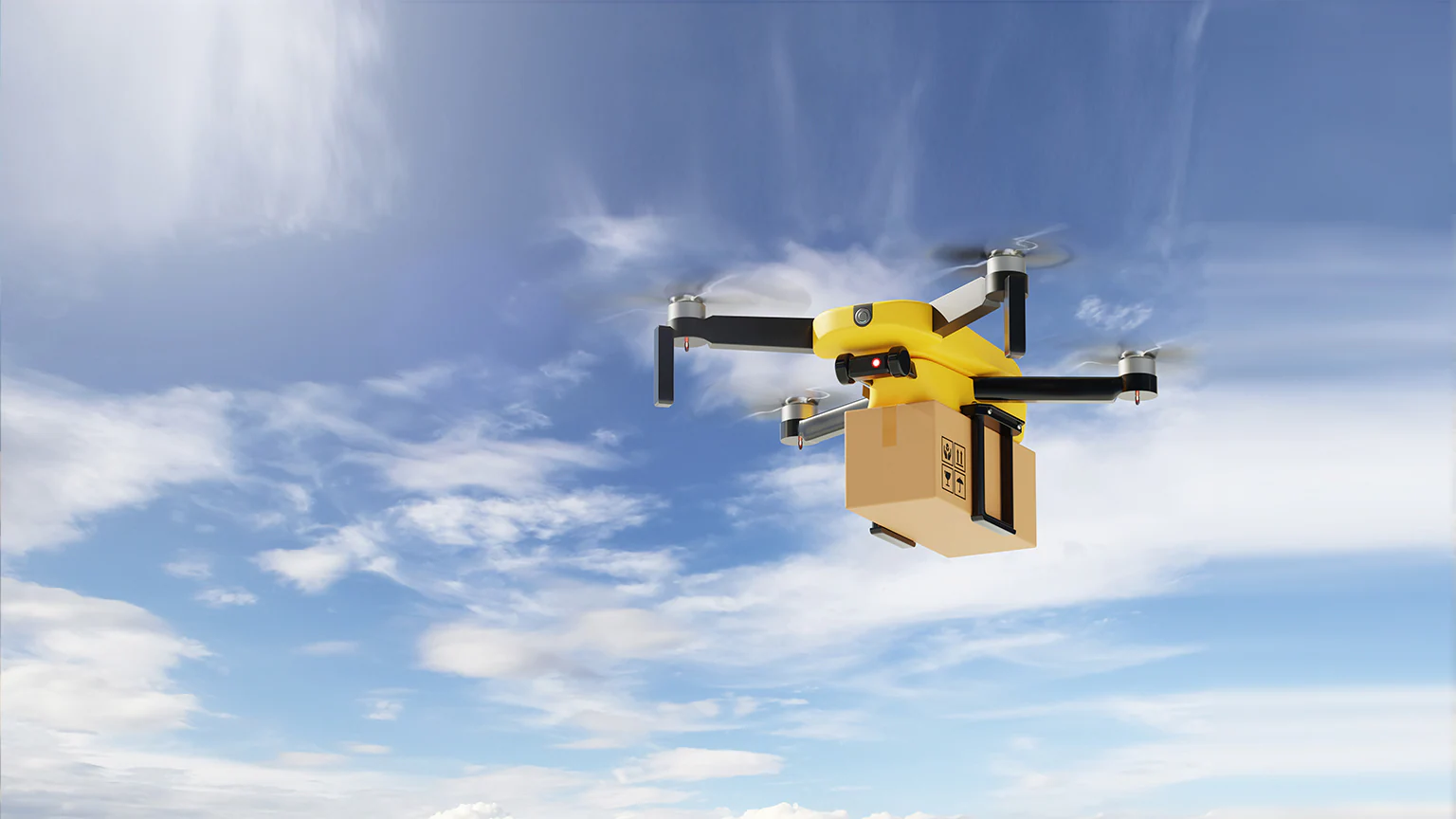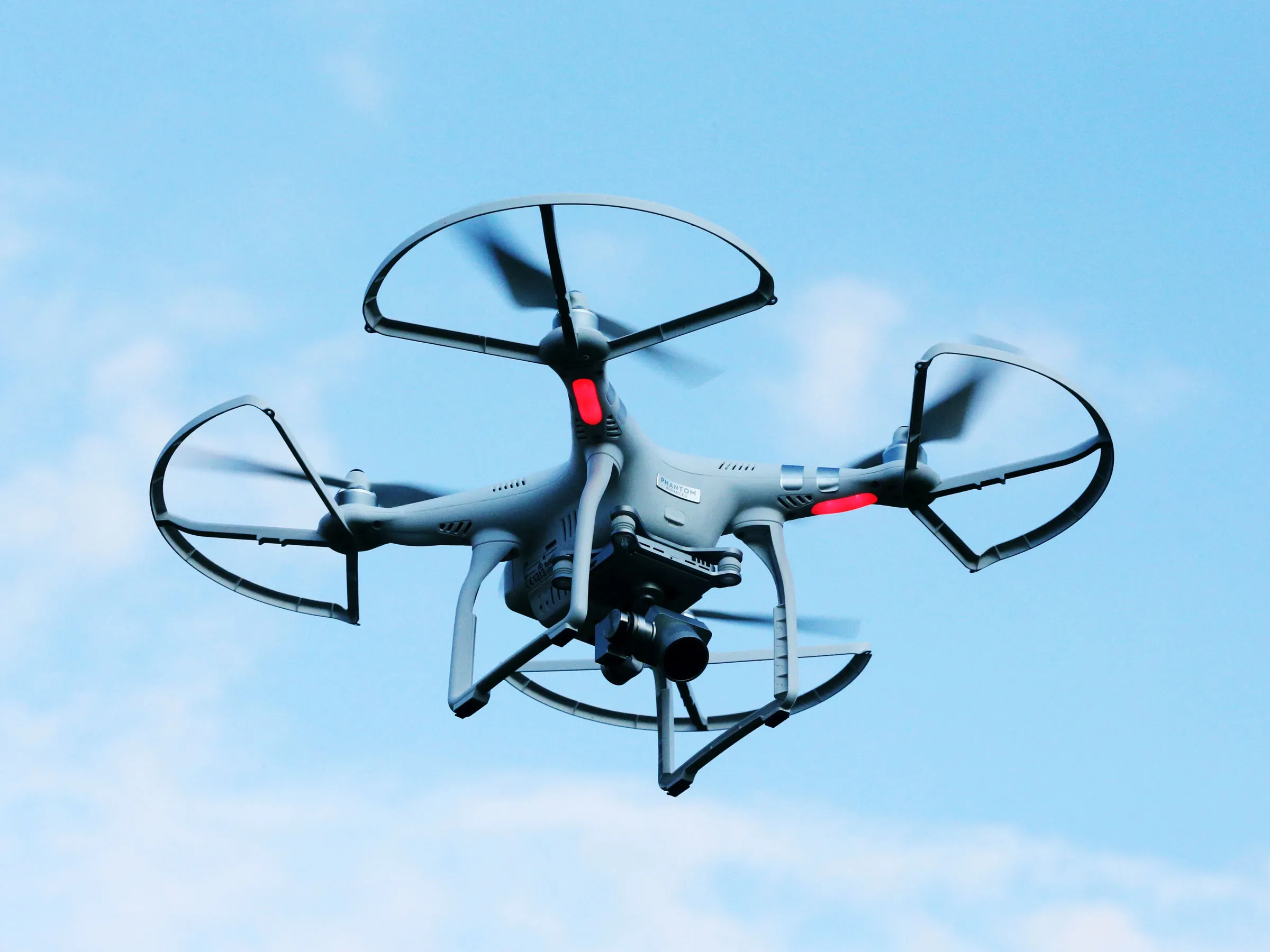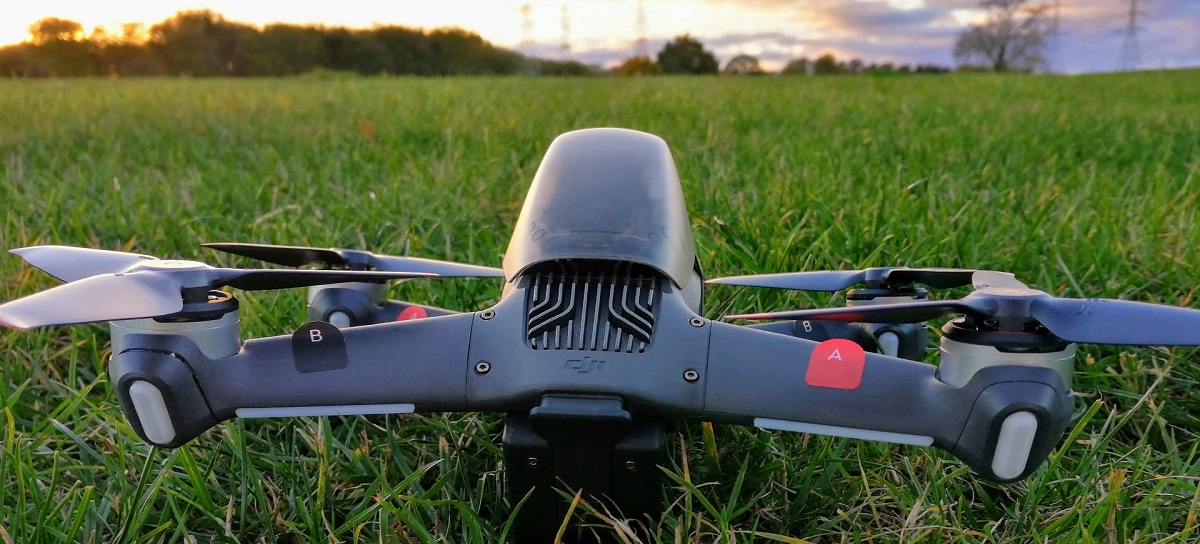Introduction
Welcome to the future of deliveries—where drones take to the skies, zipping through the air to deliver your packages with impressive speed and precision. These unmanned aerial vehicles (UAVs) have revolutionized the logistics industry, offering an innovative and efficient solution for last-mile delivery. With their ability to navigate through urban landscapes and overcome traffic congestion, delivery drones are becoming increasingly popular among retailers and e-commerce giants.
The question that often arises when discussing delivery drones is, “How fast can they actually fly?” Factors such as technological limitations, regulatory restrictions, and practical considerations all play a role in determining the speed at which these drones can operate.
In this article, we will explore the various factors that affect the speed of delivery drones, delve into the theoretical limits of their capabilities, and discuss the fastest drones currently available in the market. Additionally, we will address the challenges that come with achieving high speeds for delivery drones and speculate on future possibilities for even faster deliveries.
So, buckle up and get ready to soar through the world of delivery drones—a world where speed and efficiency redefine the way we receive our packages.
Factors Affecting Drone Speed
Several factors contribute to the speed at which delivery drones can operate. Understanding these factors is crucial to optimizing their performance and efficiency.
1. Drone Design: The physical design of a drone plays a significant role in determining its speed. Factors such as aerodynamics, weight distribution, and propulsion systems all impact the drone’s ability to move swiftly through the air.
2. Battery Life: The duration of a drone’s flight is directly tied to its battery life. Longer flight times require larger and heavier batteries, which can decrease the overall speed of the drone. Balancing the need for extended flight times with the desire for faster speeds is a challenge for drone manufacturers.
3. Payload Capacity: The weight of the packages that drones carry affects their speed. Heavier payloads can slow down drones, as they require more power to lift and carry. Striking a balance between payload capacity and speed is crucial for efficient delivery operations.
4. Weather Conditions: Weather conditions, such as strong winds, can greatly impact a drone’s speed and stability. Harsh weather conditions may force drones to fly at lower speeds or even prevent them from taking off altogether. Ensuring safe and reliable operations in varying weather conditions is essential.
5. Regulatory Restrictions: Drone operations are subject to regulations set by aviation authorities, which may impose speed limits for safety and airspace management purposes. Compliance with these regulations is necessary to ensure the safe integration of drones into the airspace.
6. Navigation and Obstacle Avoidance: Drones equipped with advanced sensors and navigation systems can fly at higher speeds while effectively detecting and avoiding obstacles. Efficient obstacle detection algorithms and real-time data processing allow drones to maintain speed without compromising safety.
7. Air Traffic Control: Integration with existing air traffic control systems is crucial for the safe operation of delivery drones. Coordinating with other aircraft and managing airspace congestion enable drones to operate at optimal speeds without interfering with other airspace users.
Considering these factors, drone manufacturers and operators continually strive to optimize speed performance while ensuring safety and compliance. By addressing these variables, delivery drones can navigate efficiently and deliver packages quickly, bringing a new level of convenience to consumers.
Theoretical Limits of Drone Speed
While the speed of delivery drones continues to evolve with advancements in technology, there are certain theoretical limits that must be considered. These limits are determined by various factors and constraints.
1. Aerodynamics: The aerodynamic design of a drone significantly impacts its top speed. As a drone moves through the air, it encounters air resistance, also known as drag. Higher speeds require efficient designs that minimize drag and allow for smoother airflow, enabling the drone to move faster.
2. Power and Propulsion: The power and propulsion systems of a drone determine its thrust and acceleration capabilities. Electric motors are commonly used in delivery drones, providing a balanced combination of power and efficiency. The power-to-weight ratio plays a crucial role in achieving higher speeds, as a greater power output allows for faster acceleration and sustained speed.
3. Energy Storage: The energy storage capacity of drone batteries limits the amount of power available for propulsion and therefore affects the achievable speed. Technological advancements in battery technology, such as improvements in energy density and fast-charging capabilities, can push the limits of drone speed by providing longer flight times and increased power output.
4. Safety and Regulations: While there are no specific theoretical speed limits for drones, safety and regulatory considerations impose practical constraints. Aviation authorities set speed limits and operational guidelines to ensure the safe integration of drones into airspace. Compliance with these regulations is crucial to maintain the trust and safety of both drone operators and the general public.
5. Environmental and Urban Constraints: Drones must navigate through various environments and urban landscapes, which can pose additional challenges. Restricted airspace, buildings, and other obstacles can limit a drone’s speed to ensure safe and controlled operations. Adhering to these constraints is essential to prevent accidents and ensure the integrity of the delivery process.
6. Technological Advancements: As technology continues to advance, the theoretical limits of drone speed are likely to be pushed further. Innovations in materials, propulsion systems, and aerodynamics have the potential to redefine what is currently considered feasible. Ongoing research and development efforts are continuously pushing the boundaries of drone speed.
While theoretical limits exist, it is important to note that practical limitations often arise due to a combination of technical, regulatory, and safety considerations. Striking the right balance between speed, safety, and efficiency is crucial for the successful implementation of delivery drones in our ever-evolving world of logistics.
Commercial Delivery Drones and Their Speeds
Commercial delivery drones come in various shapes and sizes, each with its own unique capabilities and speed profiles. Let’s take a look at some of the popular delivery drones on the market and their respective speeds.
1. DJI Matrice 600 Pro: Designed for industrial applications, the DJI Matrice 600 Pro can achieve a maximum speed of around 40 miles per hour (64 kilometers per hour). Its robust build and advanced flight control system allow for stable flight at high speeds, making it suitable for deliveries in open and controlled environments.
2. Wing (Google X): Wing, a subsidiary of Alphabet Inc. (Google X), has developed a drone designed specifically for delivery operations. It boasts a top speed of up to 78 miles per hour (125 kilometers per hour), allowing it to cover large distances quickly. Wing’s drone is equipped with multiple rotors for vertical takeoff and landing before transitioning into efficient forward flight.
3. Amazon Prime Air: Amazon’s Prime Air delivery drones are equipped with advanced technologies, including sense-and-avoid systems and artificial intelligence capabilities. While specific speed details are proprietary, Amazon envisions its drones to operate at speeds of up to 55 miles per hour (88 kilometers per hour), ensuring swift deliveries within designated areas.
4. Matternet M2: The Matternet M2 is a compact and reliable delivery drone designed to transport small payloads. It can reach speeds of up to 40 miles per hour (64 kilometers per hour), enabling efficient deliveries of medical supplies and other urgent deliveries to remote or inaccessible areas.
5. Zipline’s Fixed-Wing Drones: Zipline, a company focused on medical delivery services, uses fixed-wing drones that can achieve speeds of up to 80 miles per hour (128 kilometers per hour). These drones are designed for long-range deliveries and operate autonomously in various weather conditions, delivering essential medical supplies to difficult-to-reach locations.
It’s important to note that the speeds mentioned above represent maximum speeds. Actual speeds during delivery operations may vary depending on factors such as payload weight, weather conditions, and regulatory restrictions. However, these commercial delivery drones are designed to ensure efficient and timely delivery of packages, enhancing the overall logistics process.
The Fastest Delivery Drones in the Market
As technology continues to advance, delivery drones are becoming faster and more efficient. Here are some of the fastest delivery drones currently available in the market:
1. Falcon-8+ Drone: Developed by Freefly Systems, the Falcon-8+ is a professional-grade drone used for various applications, including aerial inspections and surveying. With a top speed of approximately 45 miles per hour (72 kilometers per hour), it offers swift and precise deliveries, making it an attractive option for commercial operations.
2. M600 Pro Drone: The DJI Matrice 600 Pro is not only known for its versatility but also for its impressive speed capabilities. It can fly at speeds of up to 40 miles per hour (64 kilometers per hour), ensuring quick and efficient deliveries.
3. Wingcopter 178: The Wingcopter 178 is a hybrid drone that combines the features of a multirotor and a fixed-wing aircraft. It can reach speeds of up to 93 miles per hour (150 kilometers per hour), allowing for rapid long-range deliveries. Its innovative design and high-speed capability make it ideal for time-sensitive operations.
4. Matternet M2 Drone: With a maximum speed of approximately 40 miles per hour (64 kilometers per hour), the Matternet M2 is designed for efficient and reliable deliveries in urban environments. It is particularly suited for transporting small payloads, such as medical supplies, to provide essential support in critical situations.
5. Wing (Google X) Drone: Wing, a subsidiary of Alphabet Inc. (Google X), has developed a drone that can achieve speeds of up to 78 miles per hour (125 kilometers per hour). This high-speed capability allows for expedited deliveries and efficient coverage of larger areas during operations.
These drones demonstrate the ongoing advancements in drone technology, enabling faster and more efficient delivery services. However, it’s worth noting that the speed capabilities mentioned above may vary depending on factors such as payload weight, battery life, and environmental conditions.
As competition in the delivery drone industry continues to grow, we can expect further innovations that will push the limits of speed and efficiency. The race to develop faster and more capable drones is driven by the desire to provide quick and convenient delivery services to customers worldwide.
Challenges in Achieving High Speeds for Delivery Drones
While the idea of high-speed delivery drones is captivating, there are several challenges that need to be overcome to achieve and maintain these top speeds. These challenges include:
1. Battery Technology: The energy storage capacity of drone batteries is a limiting factor when it comes to achieving high speeds. Longer flight times typically require larger and heavier batteries, which can reduce the overall speed and agility of the drone. Advancements in battery technology, such as improved energy density and faster charging capabilities, are crucial to overcome this challenge.
2. Aerodynamic Design: The design of a drone greatly impacts its speed and maneuverability. Achieving optimal aerodynamics, such as reducing air resistance and drag, is essential for maximizing speed. However, balancing aerodynamics with payload capacity and stability is a complex challenge that manufacturers continually face.
3. Safety and Regulations: Aviation authorities impose speed limits and operational guidelines to ensure the safe integration of delivery drones into the airspace. Regulatory compliance is necessary to maintain safety and mitigate potential risks associated with high-speed operations. Striking a balance between speed and safety is crucial to prevent accidents and maintain public trust.
4. Obstacle Avoidance: High-speed operations require robust obstacle detection and avoidance systems. Drones must be equipped with advanced sensors and algorithms to detect and react to dynamic obstacles in real-time. Ensuring the accuracy and reliability of these systems is paramount to prevent collisions and maintain safe flight paths.
5. Air Traffic Control Integration: The integration of delivery drones into existing air traffic control systems is a complex challenge. Coordinating with other airspace users, such as manned aircraft, and managing airspace congestion requires advanced communication and navigation technologies. Seamless integration into the airspace ensures that high-speed drone operations do not compromise overall airspace safety.
6. Weather Conditions: Adverse weather conditions, such as strong winds, rain, and fog, can significantly impact a drone’s speed and stability. High-speed operations may need to be restricted or adjusted to ensure safe and reliable performance in varying weather conditions. Developing drones that can operate effectively in different weather scenarios is crucial to maintaining speed and delivery efficiency.
Addressing these challenges requires a combination of technological advancements, regulatory considerations, and operational strategies. Innovations in battery technology, aerodynamics, obstacle avoidance systems, and air traffic control integration will contribute to achieving higher speeds without compromising safety and efficiency.
Overcoming these challenges will pave the way for faster and more reliable delivery drones, enhancing the speed and convenience of last-mile delivery services.
Future Possibilities for Even Faster Delivery Drones
The pursuit of faster and more efficient delivery drones continues to drive innovation in the industry. As technology advances, several exciting possibilities for even faster delivery drones emerge. Here are some potential future developments:
1. Improved Battery Technology: Advancements in battery technology are crucial for achieving higher speeds. Longer-lasting batteries with increased energy density and faster charging capabilities will allow drones to operate at faster speeds for extended periods. Emerging technologies such as solid-state batteries and hydrogen fuel cells hold promise for revolutionizing drone power sources.
2. Lightweight Materials: The use of lightweight materials in drone construction can reduce overall weight and enhance maneuverability. Advanced composites, carbon fiber, and other lightweight materials can make drones more agile, allowing for higher speeds without compromising payload capacity or structural integrity.
3. Aerodynamic Innovations: Further advancements in aerodynamic design will enable drones to slice through the air more efficiently. Streamlined shapes, reduced air resistance, and optimized flight control systems will help drones achieve higher speeds while maintaining stability and control.
4. Artificial Intelligence and Machine Learning: Integrating artificial intelligence (AI) and machine learning algorithms into drone operations could enhance their speed and efficiency. AI-powered drones can adapt to changing environmental conditions, optimize flight paths, and make real-time decisions to avoid obstacles while maintaining high speeds. These technologies can also improve route planning for multiple drones, optimizing delivery routes and reducing overall delivery times.
5. 5G Connectivity: The implementation of 5G networks will bring ultra-fast and low-latency communication capabilities, enabling drones to operate more efficiently and securely. With faster communication speeds, drones can receive and transmit data in real-time, enhancing their ability to navigate, avoid obstacles, and communicate with ground control stations seamlessly.
6. Integration with Urban Air Mobility: As the concept of urban air mobility (UAM) takes shape, delivery drones could be integrated into a larger network of flying vehicles. This interconnected ecosystem would enable efficient coordination, airspace management, and traffic optimization, facilitating higher-speed deliveries while ensuring safety and regulatory compliance.
The future holds immense potential for even faster delivery drones. Leveraging advancements in battery technology, aerodynamics, artificial intelligence, connectivity, and integration with UAM will revolutionize the industry, allowing for quicker and more efficient delivery services.
It is important to note that the implementation of these future possibilities will also require careful consideration of safety, regulatory frameworks, public acceptance, and infrastructure development. However, with continued innovation and collaboration, the future of high-speed delivery drones is poised to revolutionize the logistics industry and provide even greater convenience to consumers.
Conclusion
Delivery drones are redefining the way we receive packages, offering faster and more efficient last-mile delivery solutions. While the speed at which these drones can operate is influenced by various factors, advancements in technology are continually pushing the boundaries of what is possible.
We explored the factors affecting drone speed, including drone design, battery life, payload capacity, weather conditions, regulatory restrictions, navigation and obstacle avoidance, and air traffic control integration. Each of these factors plays a crucial role in determining the speed and efficiency of delivery drones.
We also discussed the theoretical limits of drone speed, considering aerodynamics, power and propulsion, energy storage, safety and regulations, environmental and urban constraints, and technological advancements. While these limits exist, ongoing research and development efforts are pushing these limits further, potentially unlocking even greater speeds in the future.
In our exploration of commercial delivery drones, we discovered some of the fastest drones in the market, including the DJI Matrice 600 Pro, Wing (Google X) drone, Amazon Prime Air, Matternet M2, and Zipline’s fixed-wing drones. These drones are designed to balance speed, payload capacity, and safety, enabling efficient and reliable deliveries in various environments.
However, achieving high speeds for delivery drones is not without its challenges. We discussed obstacles such as battery technology, aerodynamic design, safety and regulations, obstacle avoidance, weather conditions, and air traffic control integration. Overcoming these challenges requires continued innovation, collaborative efforts, and a keen focus on safety and regulatory compliance.
Looking forward, the future holds exciting possibilities for even faster delivery drones. Advancements in battery technology, lightweight materials, aerodynamic design, artificial intelligence and machine learning, 5G connectivity, and integration with urban air mobility will shape the future of high-speed delivery drones.
As we embrace the potential of faster delivery drones, it is important to prioritize safety, regulatory compliance, and public acceptance. Balancing speed with efficiency, reliability, and responsible operations is crucial to reap the full benefits of delivery drones in transforming the logistics landscape.
With ongoing technological advancements and a collective commitment to innovation, the speed and efficiency of delivery drones will continue to evolve, revolutionizing the way we receive our packages, and bringing new levels of convenience and accessibility to people around the world.







